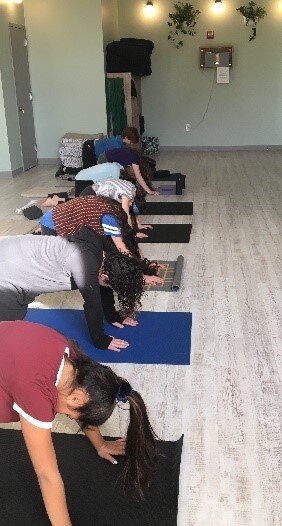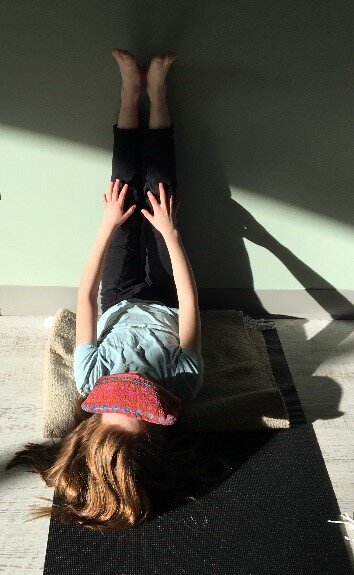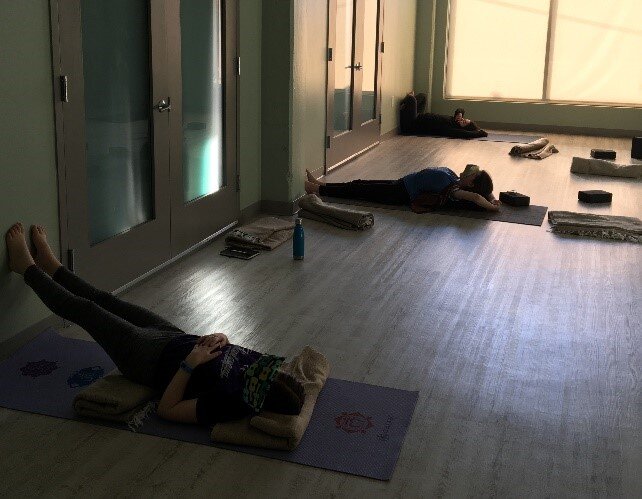Why Yoga For Teens & Tweens Is So Important
By Rebecca Gitter, Yoga Instructor
The teenage braindoesn’t function like an adult brain - research tells us that the prefrontalcortex (the decision-making part of the human brain) isn’t fully formed untilabout age 25. In the adolescent years the amygdala, the part of the brain thatcontrols emotion (fear and anger too,) is the dominant part of the brain. As theparent of an adolescent can tell you – asking a tired or hungry or stressed outteen “how was your day” might be met with an angry outburst rather than a calm“dad, let me get a snack and then I’ll tell you about my day.” It’s thatamygdala talking – letting those big emotions snap and make the overwrought kidseem (and possibly feel) out of control and unable to respond in a calm andrational way to a simple question.

No one, at any stage of life, likes to feel out of controland unable to understand or control their emotions. So what is a parentsupposed to do? – why send them to yoga class – of course.
Creating a Safe Spaceto BE
A yoga class forteens/tweens is not merely a yoga class with others their own age, but rather it’sa safe space where age appropriate movement, breathwork and discussion honorsand appreciates teens and tweens for who they are, and where they aredevelopmentally. The pressures (both internal & external) we felt as teens areamplified by what is often perceived as 24 hour judgment and the need to be“on” all the time for social media. Snapchat, Instagram and Finsta provide anopportunity for teens to connect – but as we all know those connections may notbe real and can be isolating and create a false perception of reality and maymake you feel “less than” others that you follow. Busy kids also have less timeto actually “hang-out” in person with friends and have face to faceinteractions. All of that can have a negative impact on that highly emotionalbrain – making it harder to make good choices. Inviting kids to take theirshoes off and spend an hour moving, talking, listening, getting stronger, moreflexible, and being present without any additional pressures put on them can befreeing.

A yoga class for tweens/teens must feel safe– a place wherethere is no body shaming, clothing expectations, active shooter drills, where kidsare treated with respect, where social media doesn’t come into the room, andinstead of feeling judged (or judging) kids can just BE. It doesn’t matterwhere you go to school, or even what grade you are in – in yoga class it’s alevel playing field and no one has the advantage. And we recognize and talkabout the fact that it’s not easy to handle all those pressures, and that theyneed an outlet for that steam. We ask so much of tweens/teens that it is such arelief for them to be in a space where everything is designed to make them feelsupported and gives them the space to do what they need. After a few classes most students feelcomfortable enough to actively participate in ice breakers, partner poses,restorative poses and or try a new breath that may feel a little weird thefirst time it is presented.
Getting Grounded & Relaxing
Adult yogis know that a yoga mat can be a refuge from thedaily grind, a place to move and stretch, but more importantly to get grounded.Teen yogis soon learn that the real magic of a yoga class is not the poses, butthose mindful moments between the poses when we stop and notice. These are themoments when they can stop and notice big emotions and practice some techniquesto calm down before reacting.
Relaxing
And of course, theyall want to know when will we lay down? Relaxation and an opportunity forstillness (even if it requires the weight of a couple of blankets to find thatstillness) seems to be the favorite part of most tweens/teens yoga classes. Itsclearly the portion their tired bodies and minds need the most to learn to copewith the stress and pressures of daily life.

For more information about the developing teen brain https://www.drdansiegel.com
Rebecca teaches Yoga for Teens & Tweens at 4:30pm on Mondays at the Takoma studio. Sign up on MindBody!

